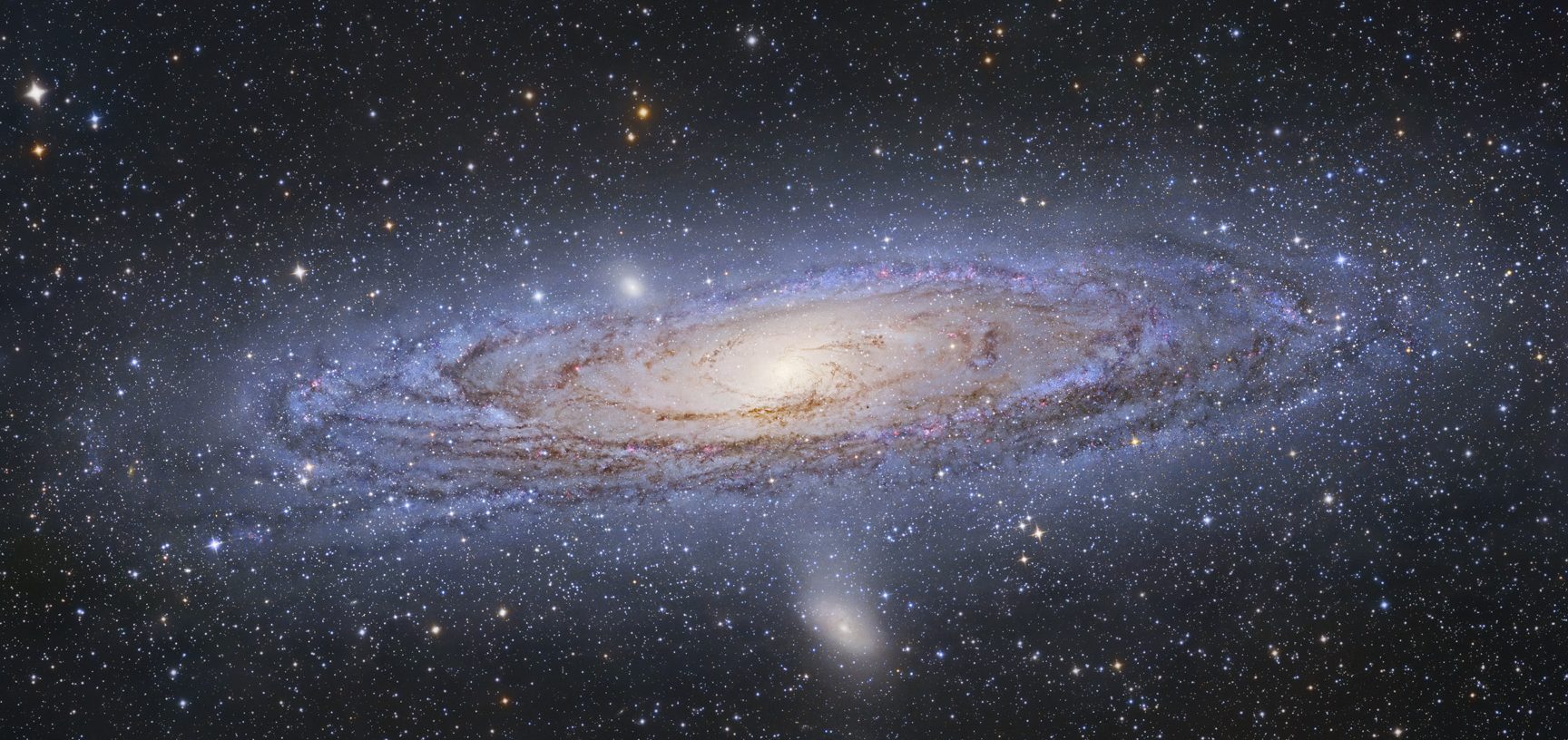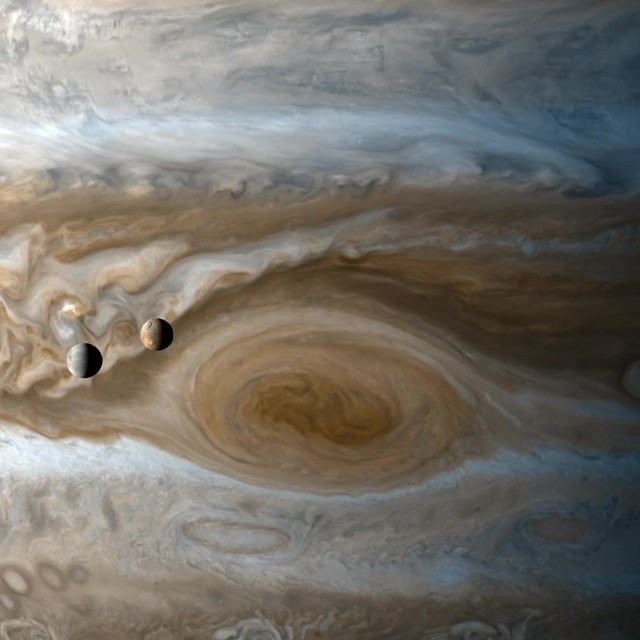
Minnesota Skies: November
Your local guide to observing celestial objects and events
Published10/30/2018 , by Parke Kunkle
How far can you see with the naked eye? Maybe a few tens of miles from a mountain top on a clear day? How about 240,000 miles to the Moon? 93 million miles to the Sun? 360 million million miles to Aldebaran? 15 million million million miles to the Andromeda Galaxy ? That galaxy, bigger than our own Milky Way galaxy, is our nearest big, neighbor galaxy. It contains hundreds of billions of stars and resides about 2.5 million light-years away.
From NASA (referencing the above image):
The most distant object easily visible to the unaided eye is M31, the great Andromeda Galaxy some two and a half million light-years away. But without a telescope, even this immense spiral galaxy – spanning over 200,000 light years – appears as a faint, nebulous cloud in the constellation Andromeda. In contrast, a bright yellow nucleus, dark winding dust lanes, gorgeous blue spiral arms and star clusters are recorded in this stunning telescopic digital mosaic. While even casual skygazers are now inspired by the knowledge that there are many distant galaxies like M31, astronomers seriously debated this fundamental concept less than 90 years ago. Were these “spiral nebulae” simply outlying components of our own Milky Way Galaxy or were they instead “island universes” — distant systems of stars comparable to the Milky Way itself? This question was central to the famous Shapley-Curtis debate of 1920, which was later resolved by observations of M31 in favor of Andromeda, island universe.
You will need a clear dark sky away from city lights to see it. Look for a small fuzzy patch directly overhead on November 1 around 11 pm and around 9 pm near the end of the month. You may catch a glimpse of it out of the corner of your eye (often referred to as averted vision). From not so dark skies, lie down on a picnic table and use binoculars.
When you see it, remember that the light you see now left there two and a half million years ago and is just now reaching you. Wow.
Sky-lights
| November | Highlight | Comments |
| 4 | End Daylight Saving Time | 2 am, Set clocks back one hour for most of US & Canada |
| 5 | Bright star Spica and very bright Venus below thin crescent Moon | 7:30 am, Low ESE |
| 6 | Bright Venus right of very thin crescent Moon | 7:30 am, Very low ESE |
| 11 | Yellowish Saturn about 4° below right of thin crescent Moon | 7:15 pm, Low SW |
| 15 | Ruddy Mars above left or above Moon | Dusk to midnight |
| 23 | Bright star Aldebaran above right of Moon | 9 pm, E |
| 29 | Bright star Regulus below or below right of Moon | 1 am to 7 am |
Resources
When viewing planets, stars or constellations in the night sky, it is helpful to use a sky map. Minnesota Starwatch is another great resource for tracking the night sky.
Meet up with other stargazing enthusiasts via Twin Cities Sidewalk Astronomers, MN Astronomical Society & MN Institute for Astrophysics.
Meanwhile, on the internet
“Voyage of the Moons” GIF from Cassini’s images from Jupiter and Saturn
Researchers discover new type of stellar collision
Watch JPL & NASA test their 2020 Mars mission parachute
Apollo 8 Astronauts On Seeing the Earth in Color From Space
Interstellar Visitor, ’Oumuamua, Found to Be Unlike a Comet or an Asteroid
Photo Gallery: Pulsars Beam Like Lighthouses in the Cosmos


